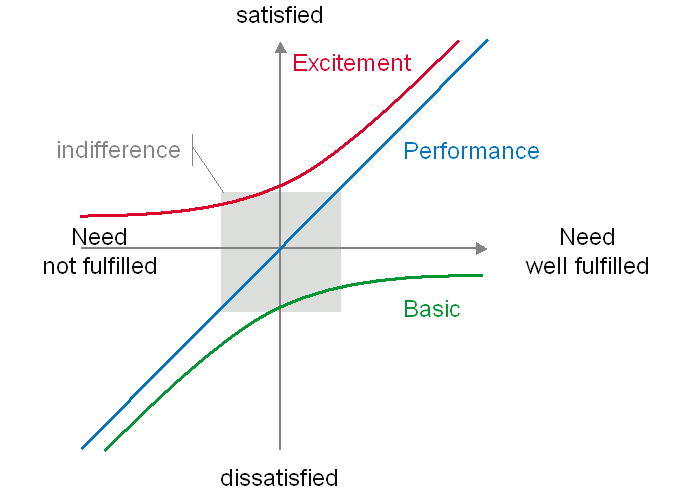This is simply keeping the product backlog prioritised based on delivering maximum value to the customer. As new items are added to the backlog they are compared to current items on the backlog in terms of business value. This is an on-going process throughout the project.
> More information Customer Valued Prioritisation from Scrum Study
We have crafted a list of our top 10 customer value prioritization techniques you can use when assessing your backlog of features. This should be done during backlog grooming or story mapping sessions. The priority will also need to take into consideration scheduling constraints, dependencies within features and architecture requirements.
MoSCoW
MoSCoW is derived from the Must, Should, Could and Would. To be more specific. It is highly effective when determining the feature set for an MVP. It gives context on the importance of each feature and helps the team focus on the most important features.
The 4 Categories of the MoSCoW Model
- Must Have
- Should Have
- Could Have
- Would like to Have
It is highly effective and straightforward for getting the business to convey their priorities.
>> More information MoSCoW from All About Agile
Simple Schemes
On of the simplest schemes is to label stories Priority 1, 2, 3 or high, medium and low. This is a very straightforward method but loses its effectiveness when too many items are marked high priority. A good way to govern this is to have defined ground rules what determines a priority 1, 2, 3.
>> More information on Simple Schemes from Leading Answers
Monopoly Money
The stakeholders are provided monopoly money equal to the projects budgets and asked to distribute the budget amongst the project features. Monopoly money technique works best when prioritising features as if prioritising the entire backlog the stakeholders might omit documentation or other tasks they don’t see the immediate value in.
>> More information on Monopoly Money
100-Point Method
The 100-Point method was developed by Dean Leffingwell and Don Widrig for use cases. The stakeholders are provided 100 points which they can distribute amongst features. They can distribute any way they want even put 100 on one feature if it is their one and only priority.
>> More information 100-Point Method from the Modern Analyst
Kano Analysis
This technique categorises features into 4 categories:
- Delighters/Exciters
- Satisfiers
- Dissatisfiers
- Indifferent

This will help convey the features that bring the most customer satisfaction. Please see below image for reference.
>> More information Kano Analysis by Tyner Blain
Dot Voting or Multi-Voting
Each stakeholder gets a predetermined number of votes/dots and which they distribute amongst features. A good rule of thumb for assigning votes is 20% of total items for example if 50 items would be 50 x 0.2 = 10 so each person would have 10 votes.
>> More information Dot Voting from Dotmocracy
Requirements Reviews
This is another name for backlog grooming or refining the backlog. Always remember the customer is responsible for setting the priorities and making sure the backlog is up to date. The delivery team is responsible for estimating the work so the business can effectively prioritise the work based on cost-benefit analysis.
>> More information Requirements Reviews from Bridging the Gap
Minimal Viable Product (MVP)
When planning releases of a product the releases need to deliver value to the business. For this reason, the MVP needs to be defined identifying what features need to be included to make the product functional and then plan releases around the MVP. MVP is also called MMF minimum marketable feature which the product is complete enough it brings value but yet still small enough that it is clear that it is not complete.
Relative Prioritisation/Ranking
Regardless of how the backlog is prioritised the end goal is to understand the stakeholder priorities of the features. With relative prioritisation, it simply organises features by number 1,23 etc. This makes it easier to define a minimum viable product by simply say 1-6 need to be done to create the MVP. When new items are added to the list late on in development they will need to replace a current item in the MVP list or move down the priority of the item from 5 to 6. This helps give the team a clear understanding of what needs to be done to complete the project.
> More information on Relative Prioritisation from Process Impact
Customer Value Prioritisation Methods FAQs
What are Prioritization Techniques?
These are techniques you use to determine the sequence you want to implement features or projects. There are different techniques depending on the requirements and stage of the project from determining the MVP to Business value.
How do you prioritize in Agile?
In Agile the product owner is responsible for maintaining their product backlog in a linear fashion. The reason for this is that the development team always should take the top item in the backlog to work on next.
Who Prioritizes the Backlog?
In Agile companies the product owner or product manager is responsible for prioritzing the backlog. This should be done with the tech lead and scrum master so they can understand the reasoning and convey the message to development team.
Customer Value vs Business Value Prioritization Methods?
Assess features based on delivering maximum value to the customer, such as Kano Analysis. Business value could include meeting regulation or internal requirements. An example of this would be Monopoly Money
